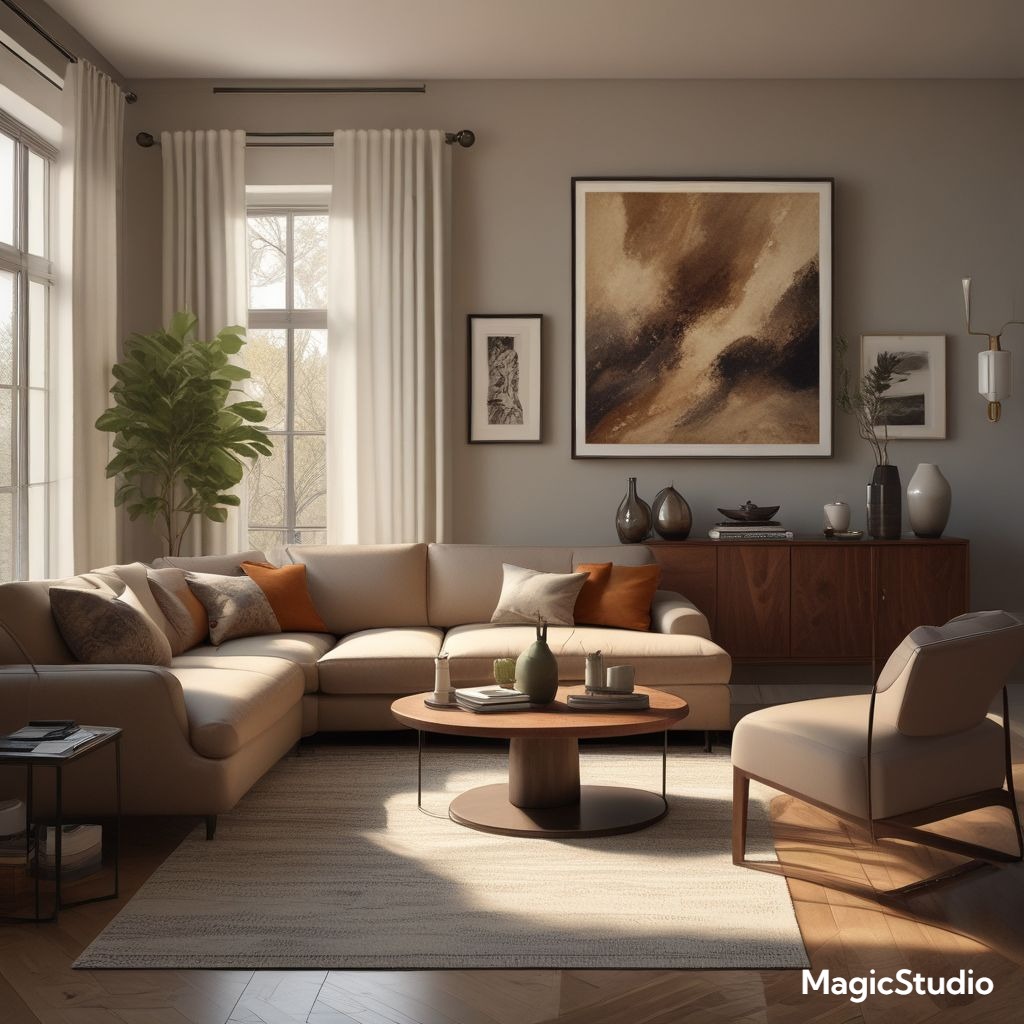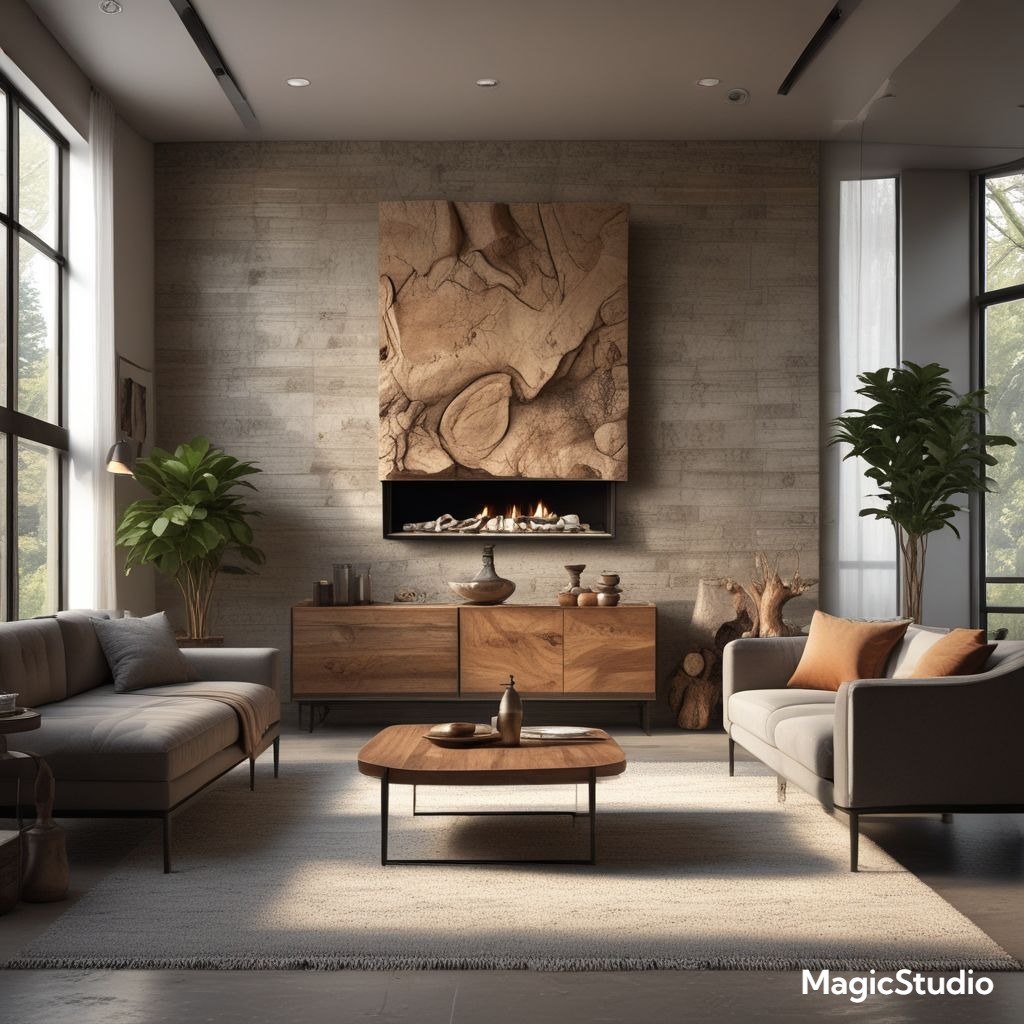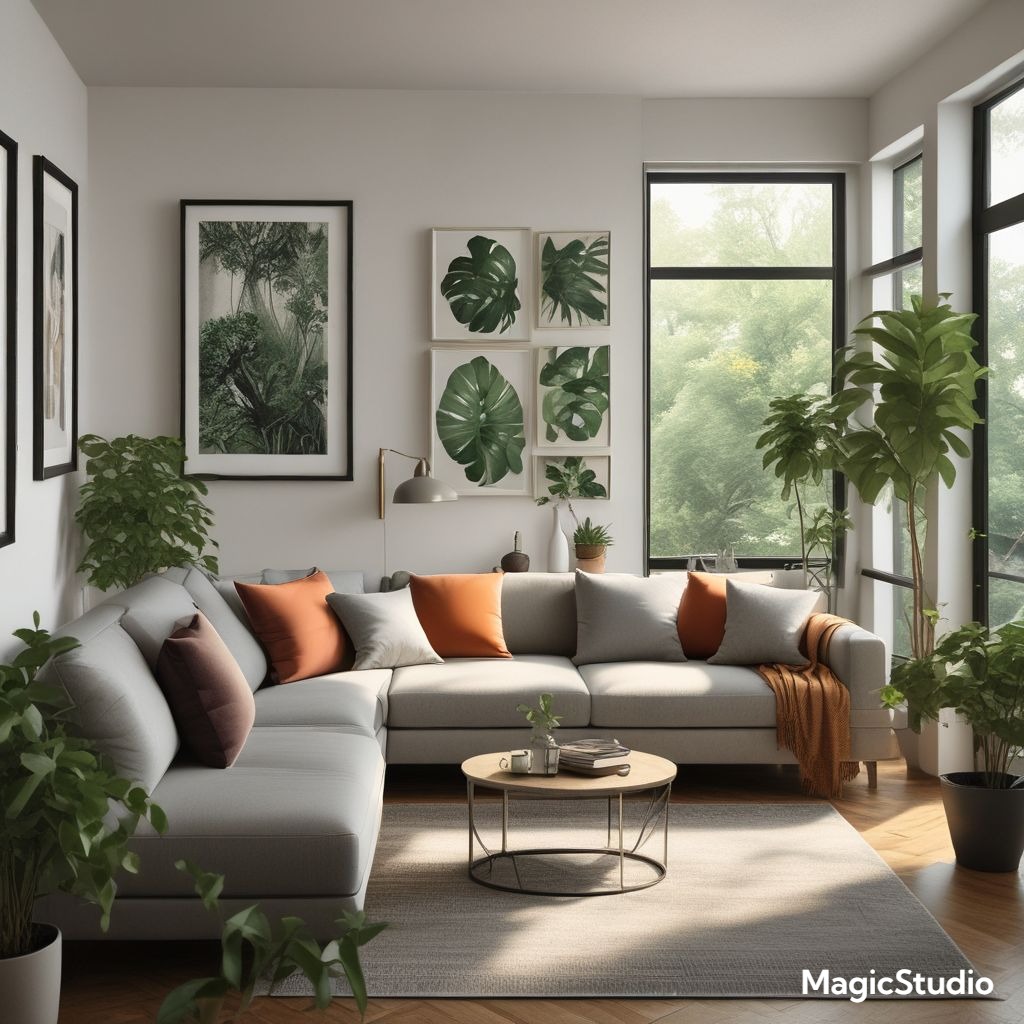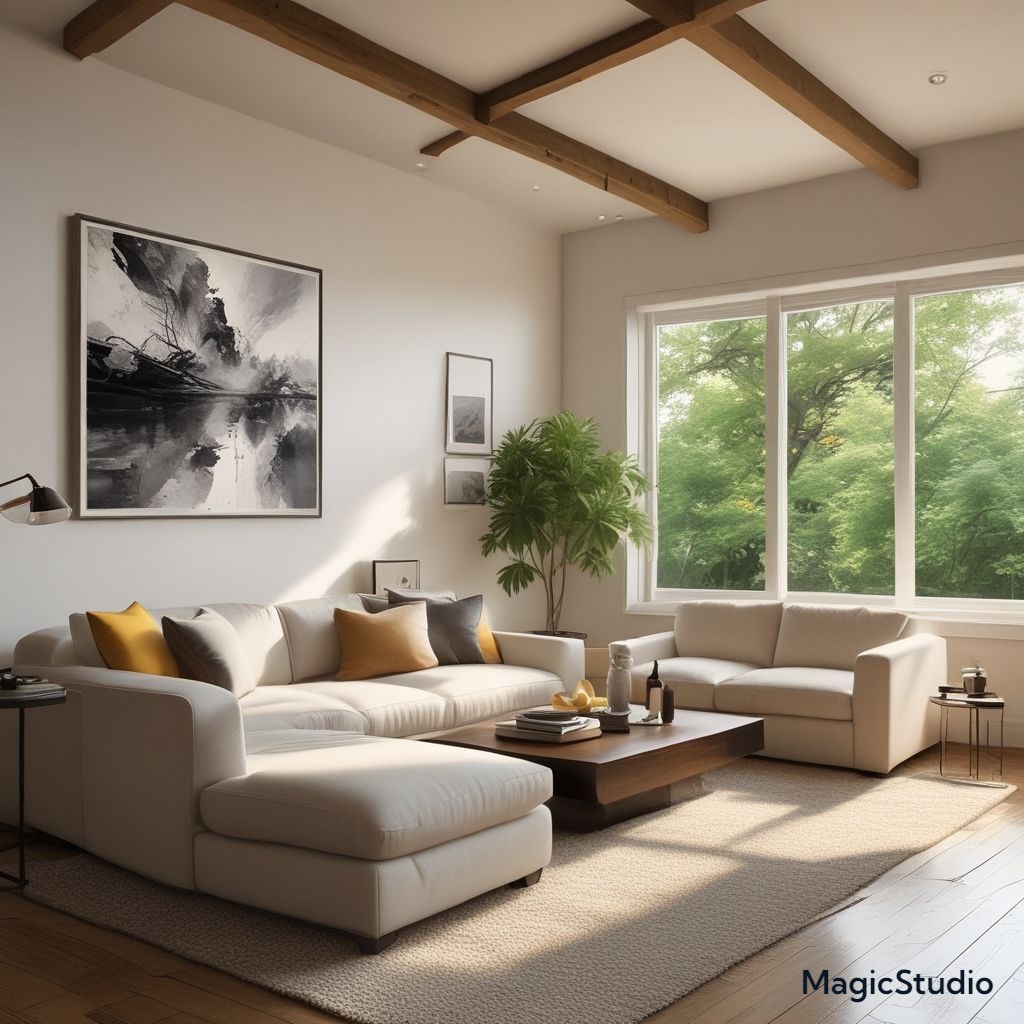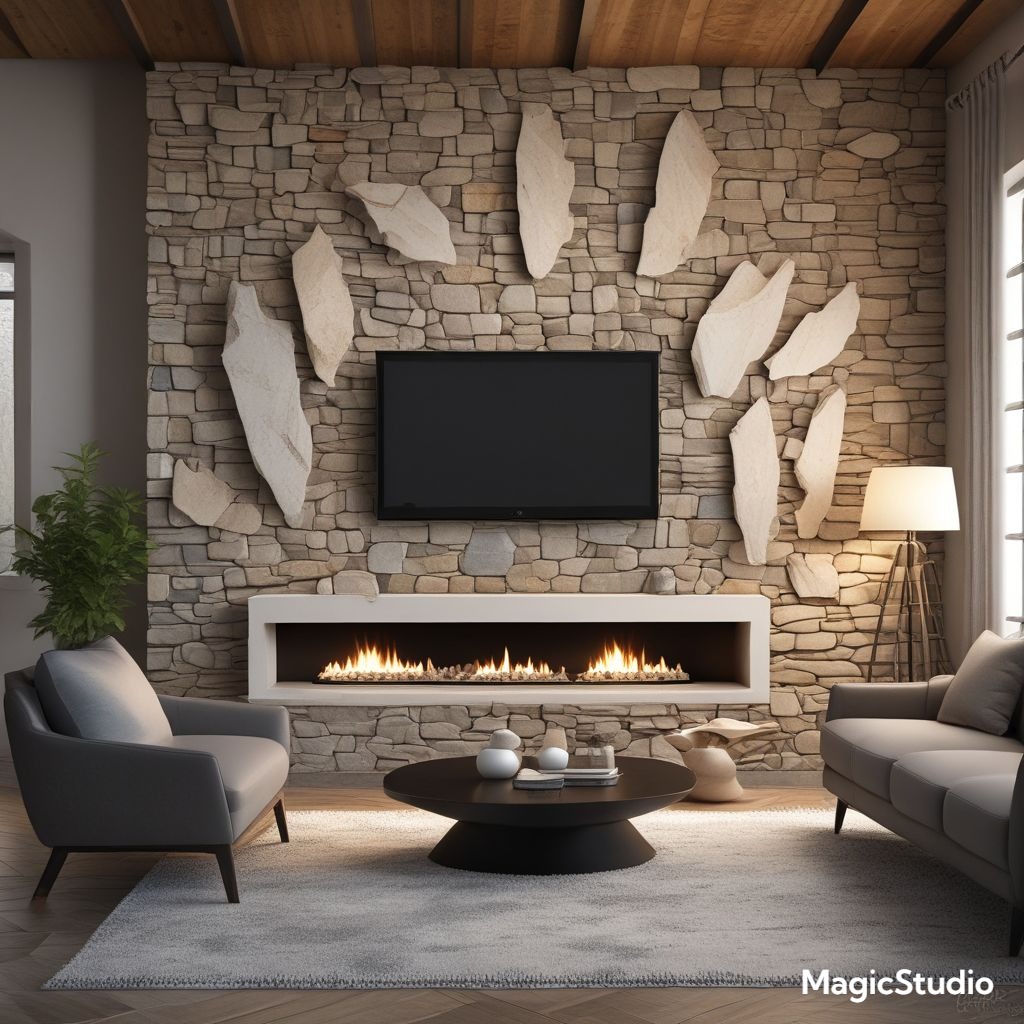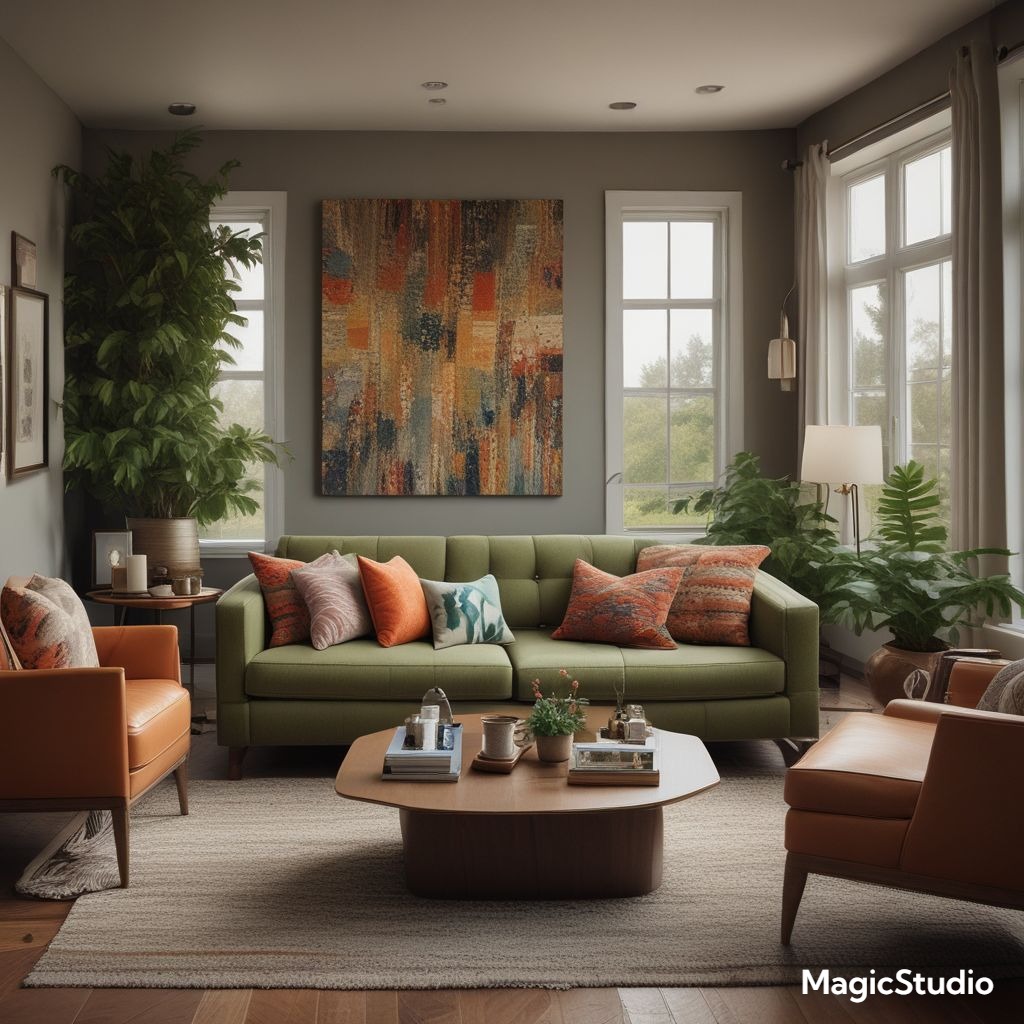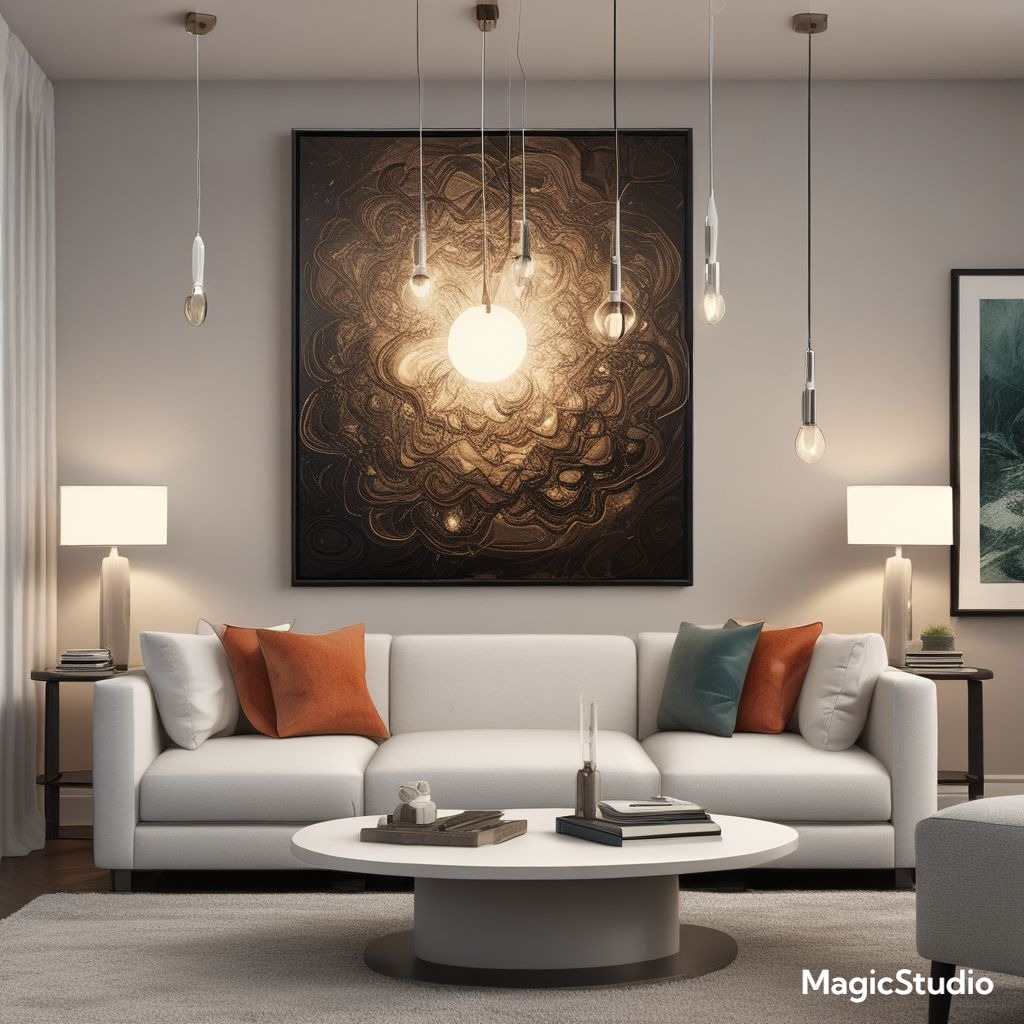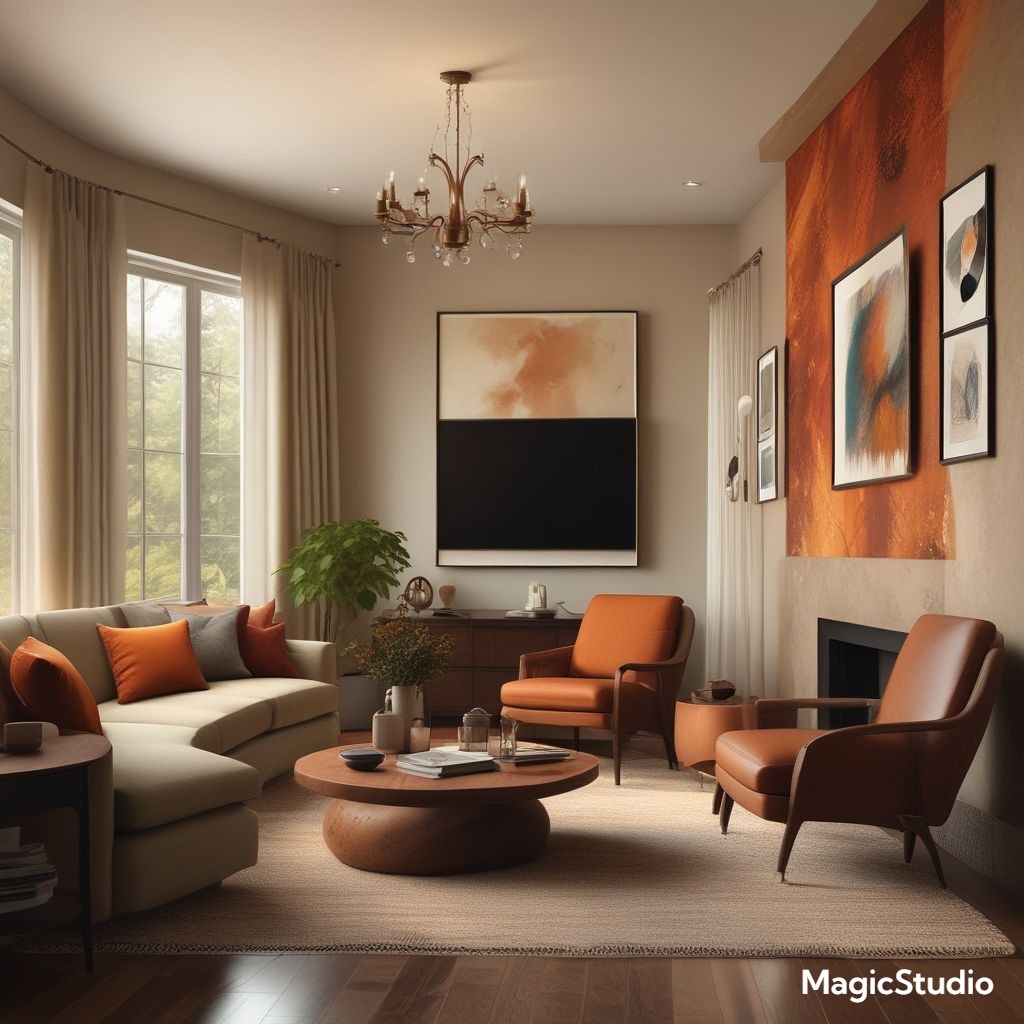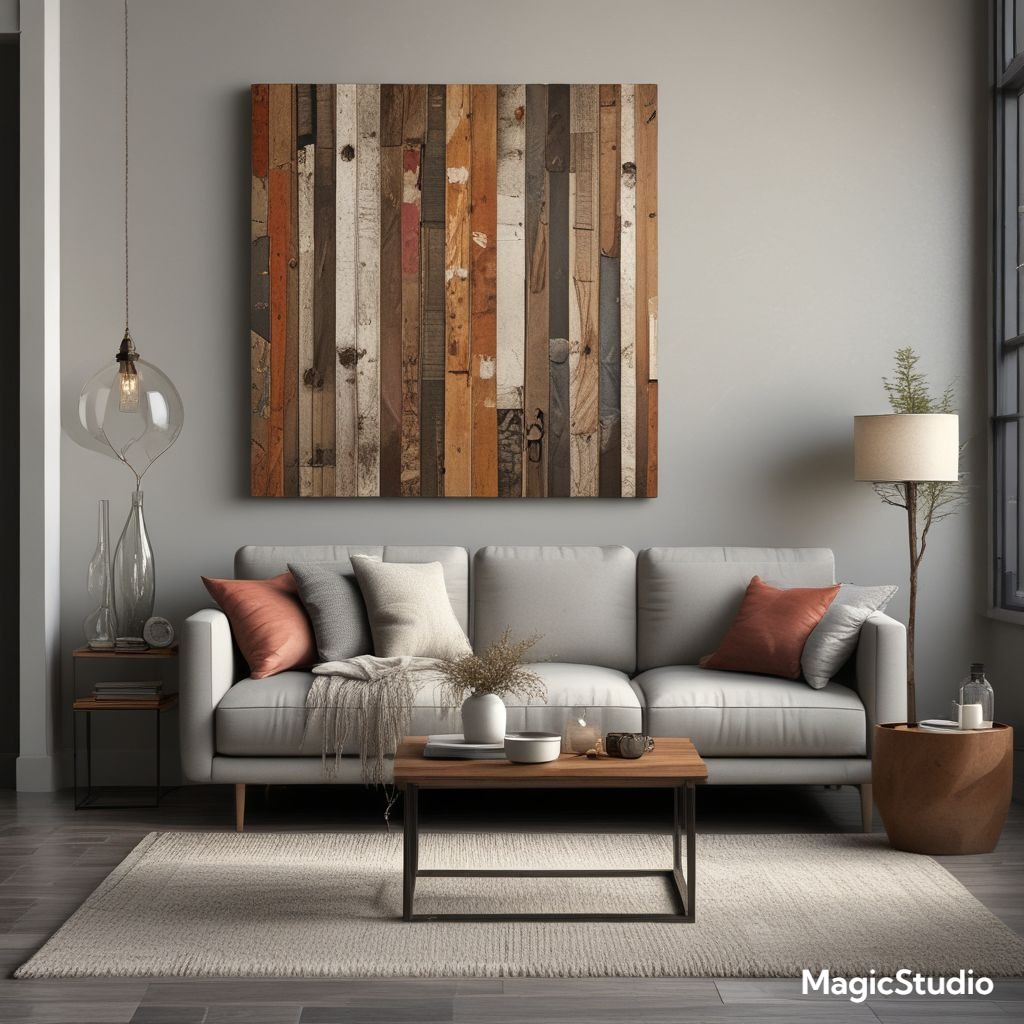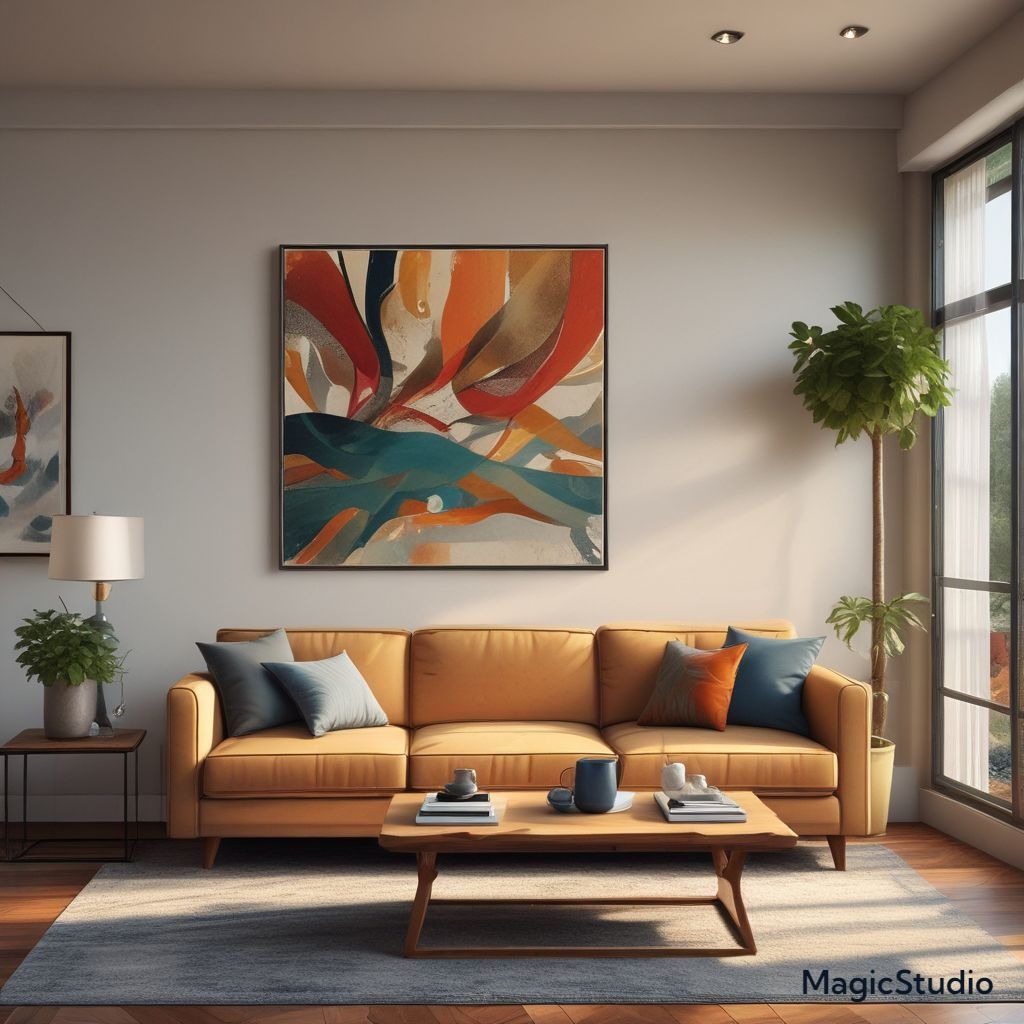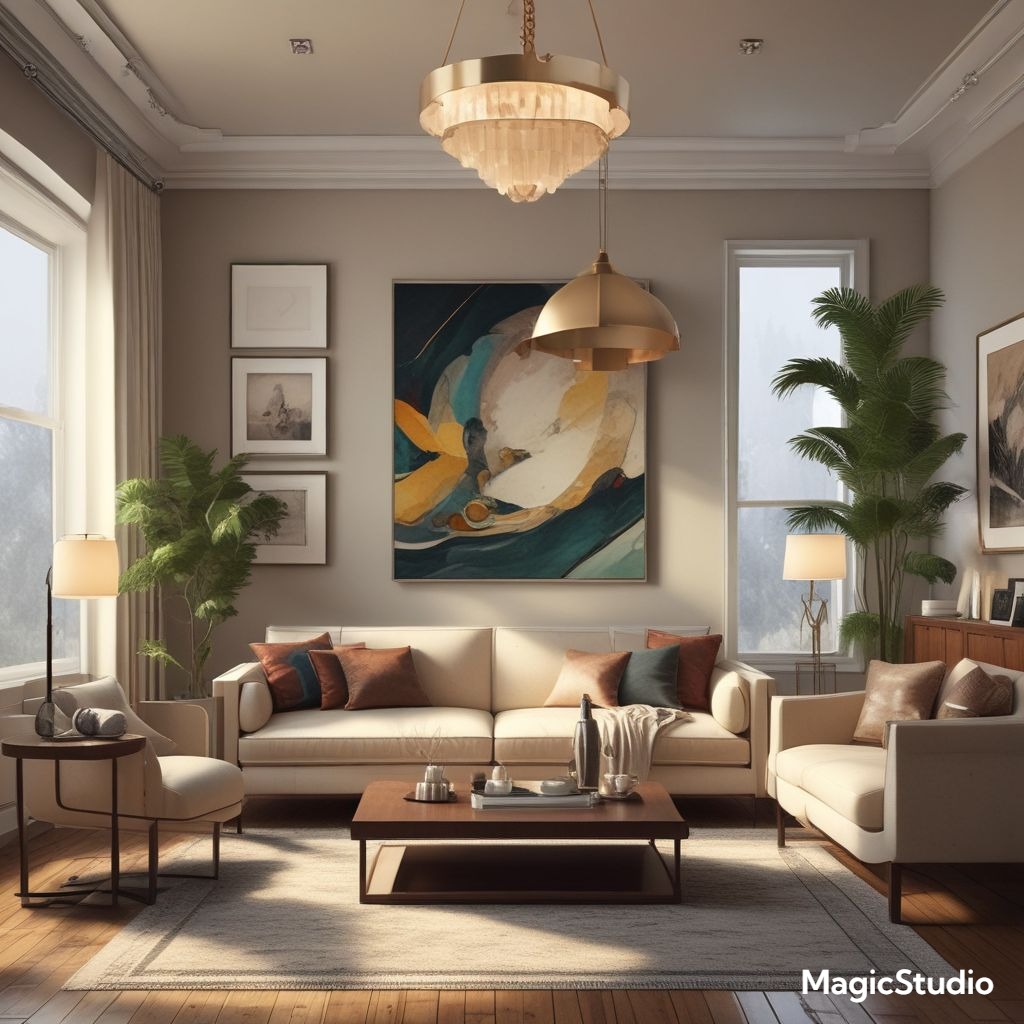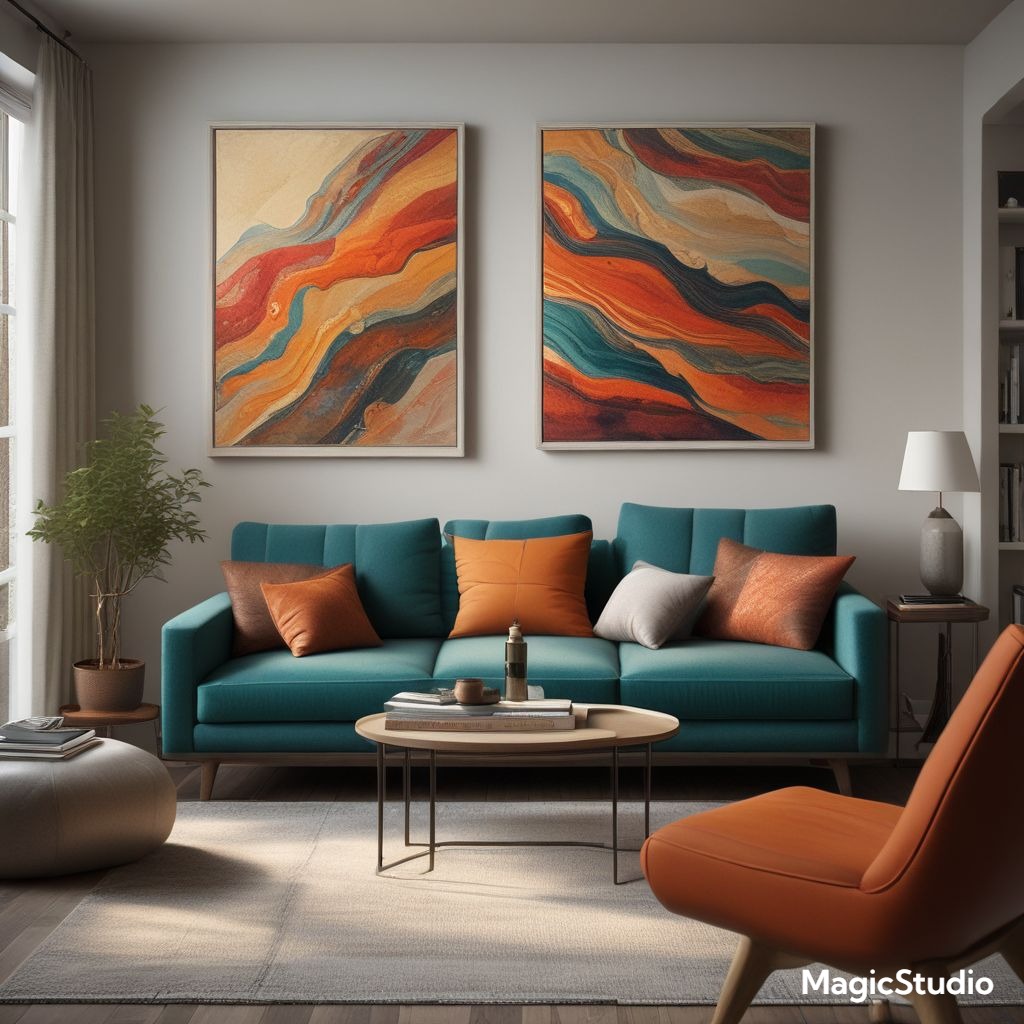In the realm of interior design, the organic modern style has emerged as a captivating trend, seamlessly blending the warmth and natural elements of organic design with the clean lines and functionality of modern aesthetics. This harmonious fusion creates spaces that are both visually stunning and incredibly inviting, reflecting a contemporary sensibility while embracing the beauty of nature. This article explores 18 captivating design ideas for your living room, each capturing the essence of organic modern decor, helping you transform your space into a sanctuary of style and comfort.
Earthy Neutrals and Rich Wood Tones
Embrace the calming embrace of earthy neutrals as the foundation of your organic modern living room. Think muted shades of beige, taupe, and gray, reminiscent of sand, stone, and weathered wood. These hues create a sense of serenity and allow for pops of color to shine. To introduce the warmth of organic elements, incorporate furniture crafted from rich wood species like walnut, oak, or cherry. The natural grain patterns and warm tones of these woods bring a sense of grounding and authenticity to the space. Accentuate the wood with metal accents, like brass or copper, for a touch of modern sophistication. This color palette is particularly popular in the US, where it reflects a desire for a relaxed and inviting atmosphere.
Textured Walls and Natural Materials
Embrace the tactile qualities of natural materials by incorporating them into your living room walls. Consider using textured wallpaper with organic patterns like woven reeds, bamboo, or bark. These patterns add depth and visual interest, evoking a sense of connection to nature. Alternatively, opt for natural stone cladding, which brings a touch of rustic elegance and adds a unique dimension to the space. You can also explore incorporating natural materials like cork, jute, or woven fabrics into wall panels or tapestries. These materials bring warmth and visual appeal, creating a sense of connection to nature’s organic textures. This design approach is particularly prevalent in Europe, where sustainable living and natural materials are highly valued.
Living Greenery and Indoor Plants
Infuse your living room with the vibrant energy of living plants. Bring in a variety of plants in different shapes and sizes, strategically placed to create a sense of lushness and vitality. Consider plants with large, leafy foliage, such as ferns, monsteras, or fiddle-leaf figs. These plants add a touch of natural drama and purify the air. For a touch of color, incorporate flowering plants with vibrant blooms like orchids, lilies, or succulents. The presence of plants not only brings life and beauty to the space but also enhances air quality, promoting well-being and creating a sense of connection to the natural world. This approach is gaining traction both in the US and EU, reflecting a growing appreciation for the therapeutic benefits of indoor greenery.
Organic Geometric Shapes
Embrace the beauty of organic geometric shapes in your living room decor. This design approach combines the natural flow of organic shapes with the clean lines of geometric forms. Incorporate furniture with rounded edges, like a curved sofa or a circular coffee table. You can also introduce geometric patterned rugs or throws with organic elements, such as abstract shapes or botanical motifs. This interplay of curves and angles creates a visually dynamic space that is both stylish and inviting. The combination of organic and geometric shapes is particularly popular in both the US and EU, reflecting a growing appreciation for design that bridges the gap between natural and modern aesthetics.
Natural Light and Open Layouts
Maximize natural light and create a sense of openness in your living room. Opt for large windows that allow ample sunlight to flood the space, brightening the room and enhancing the feeling of spaciousness. Avoid bulky curtains or blinds that obstruct natural light. Instead, use sheer drapes that allow light to filter through, creating a soft and inviting ambiance. The use of natural light enhances the beauty of natural materials and creates a welcoming and airy atmosphere, reflecting a desire for light-filled spaces prevalent in both the US and EU.
Natural Stone Accent Walls
Introduce a touch of raw elegance with a natural stone accent wall. Choose a stone that complements the overall color scheme and adds texture and visual interest to the space. Consider using sandstone, limestone, or slate, each with its unique patterns and color variations. A stone accent wall can be used to create a focal point in the room, framing a fireplace, a media wall, or a seating area. This design element adds a sense of timeless beauty and sophistication, reflecting a growing appreciation for natural materials in both the US and EU.
Woven Textures and Patterns
Incorporate woven textures and patterns into your living room decor. Choose furniture with woven fabrics like linen, cotton, or jute, which add warmth and texture to the space. Look for rugs with woven patterns or use woven baskets for storage, adding a touch of natural charm. Woven textures create a sense of warmth and coziness, adding depth and visual interest to the space. This design approach is particularly prevalent in Europe, where woven fabrics and patterns are deeply rooted in traditional crafts and are valued for their natural beauty and sustainability.
Statement Lighting
Make a statement with lighting fixtures that echo the organic modern style. Opt for pendant lights with natural materials like wood, bamboo, or rattan. These fixtures create a warm and inviting ambiance while adding a touch of natural charm. Alternatively, consider using a geometric chandelier with metal accents, creating a striking visual contrast. Ensure the lighting complements the overall design of the room and highlights the beauty of the natural materials used. This design approach is gaining popularity in both the US and EU, where statement lighting is used to create a focal point and enhance the overall aesthetic.
Warm Color Palettes with Earthy Accents
Embrace warm color palettes with earthy accents to create a cozy and inviting atmosphere. Opt for shades of burnt orange, ochre, deep green, or terracotta, evoking the colors of nature. These warm hues create a sense of warmth and comfort, while the earthy accents bring in a sense of natural grounding. You can incorporate these colors through furniture, textiles, or artwork, creating a harmonious and inviting space. This color palette is particularly popular in the US, where it reflects a desire for a welcoming and cozy living environment.
Minimalist Furniture with Organic Elements
Embrace minimalist furniture with organic elements to create a clean and uncluttered living room. Choose furniture with simple lines and functional designs, incorporating natural materials like wood, bamboo, or rattan. This creates a balanced aesthetic that emphasizes both functionality and beauty. Consider incorporating organic elements into furniture pieces, such as curved legs, rounded edges, or natural wood grain patterns. This approach reflects a minimalist aesthetic with a touch of natural warmth, popular in both the US and EU.
Handcrafted Accents and Artisan Touches
Add a touch of handcrafted charm to your organic modern living room. Incorporate pieces with artisan details, such as handcrafted ceramic bowls, woven baskets, or hand-painted artwork. These pieces add a sense of uniqueness and personality to the space, reflecting the individuality of the homeowner and their appreciation for handcrafted items. Choose pieces that complement the overall design scheme and add depth and character to the room. This approach is particularly prevalent in Europe, where handcrafted traditions are deeply valued and artisanship is celebrated.
Rustic Elements and Reclaimed Wood
Introduce rustic elements and reclaimed wood to bring a touch of natural history and character to the space. Consider using reclaimed wood for coffee tables, shelves, or accent walls. The unique grain patterns and textures of reclaimed wood add a sense of history and authenticity to the space, highlighting the beauty of repurposed materials. You can also incorporate rustic elements like antique mirrors, woven rugs, or vintage lamps, adding a touch of vintage charm to the organic modern aesthetic. This design approach is gaining popularity in both the US and EU, reflecting a growing awareness of sustainability and a desire to incorporate repurposed materials.
Mid-Century Modern Influences
Embrace the clean lines and geometric shapes of mid-century modern design, incorporating elements that echo this iconic style. Consider using mid-century modern furniture pieces, such as an Eames lounge chair or a Saarinen tulip table. These pieces add a touch of vintage flair and sophistication to the organic modern aesthetic. You can also incorporate mid-century modern textiles, such as geometric patterns, bold colors, and natural textures, creating a harmonious blend of styles. This design approach is popular in both the US and EU, reflecting a continued appreciation for mid-century modern design and its timeless appeal.
Art Deco Inspiration
Draw inspiration from the geometric patterns and luxurious materials of Art Deco design, adding a touch of glamour and sophistication to your organic modern living room. Incorporate Art Deco elements into furniture, textiles, and lighting fixtures. Consider using furniture with geometric shapes, such as a chaise lounge with curved lines or a mirror with a sunburst pattern. You can also incorporate Art Deco textiles, such as velvet, silk, or geometric patterns in bold colors. This design approach combines the organic elements with the geometric shapes and luxurious materials of Art Deco, creating a unique and stylish aesthetic. This style is gaining popularity in the US and EU, reflecting a renewed appreciation for Art Deco’s elegance and sophistication.
Ethically Sourced Materials and Sustainable Practices
Embrace ethically sourced materials and sustainable practices in your living room decor. Choose furniture and textiles made from sustainably harvested wood, organic cotton, or recycled materials. This reflects a conscious commitment to environmental responsibility and supports businesses that prioritize sustainable practices. You can also look for furniture and textiles that are locally made, reducing transportation emissions and supporting local artisans. This design approach is particularly prevalent in Europe, where sustainability and ethical sourcing are deeply valued.
